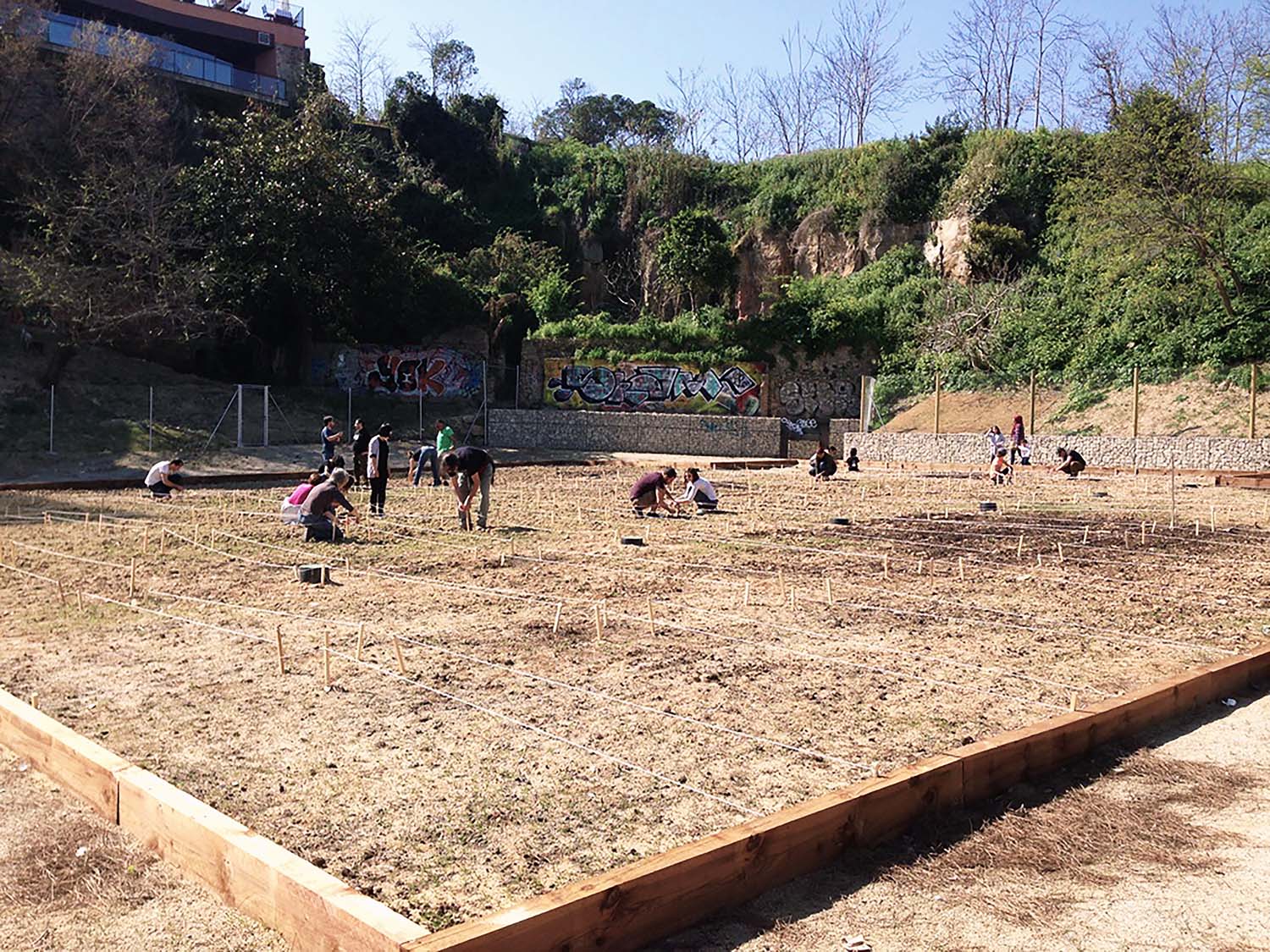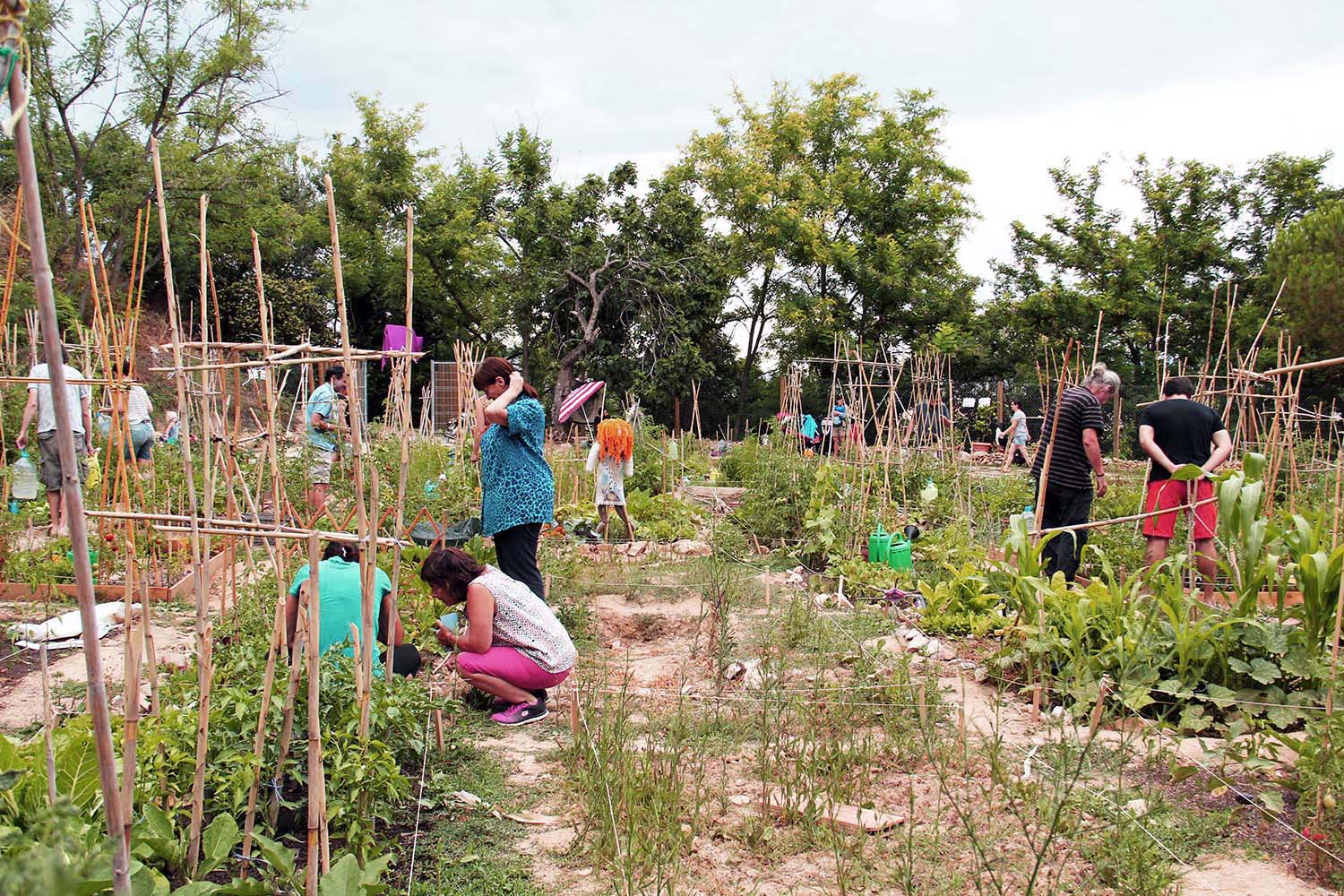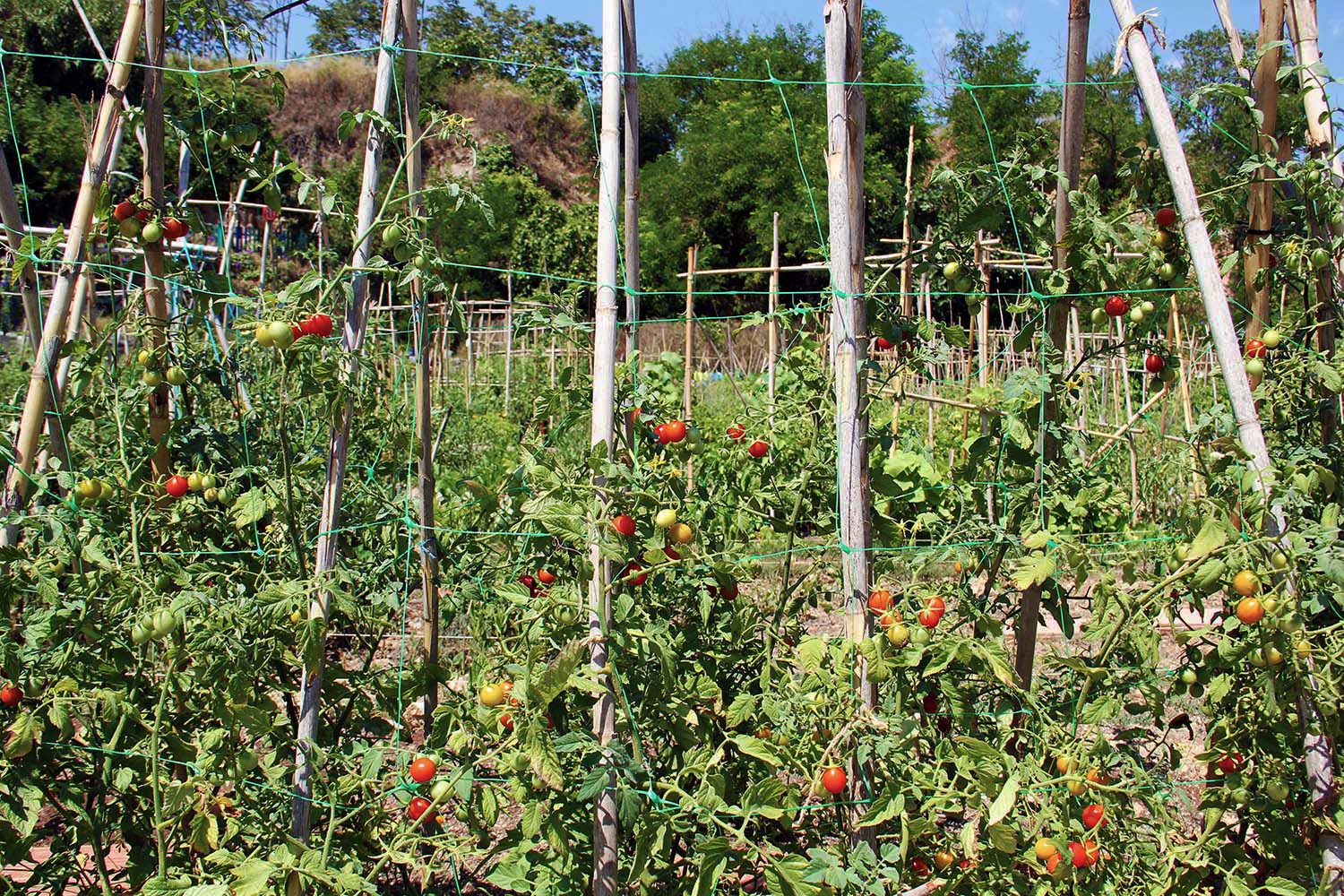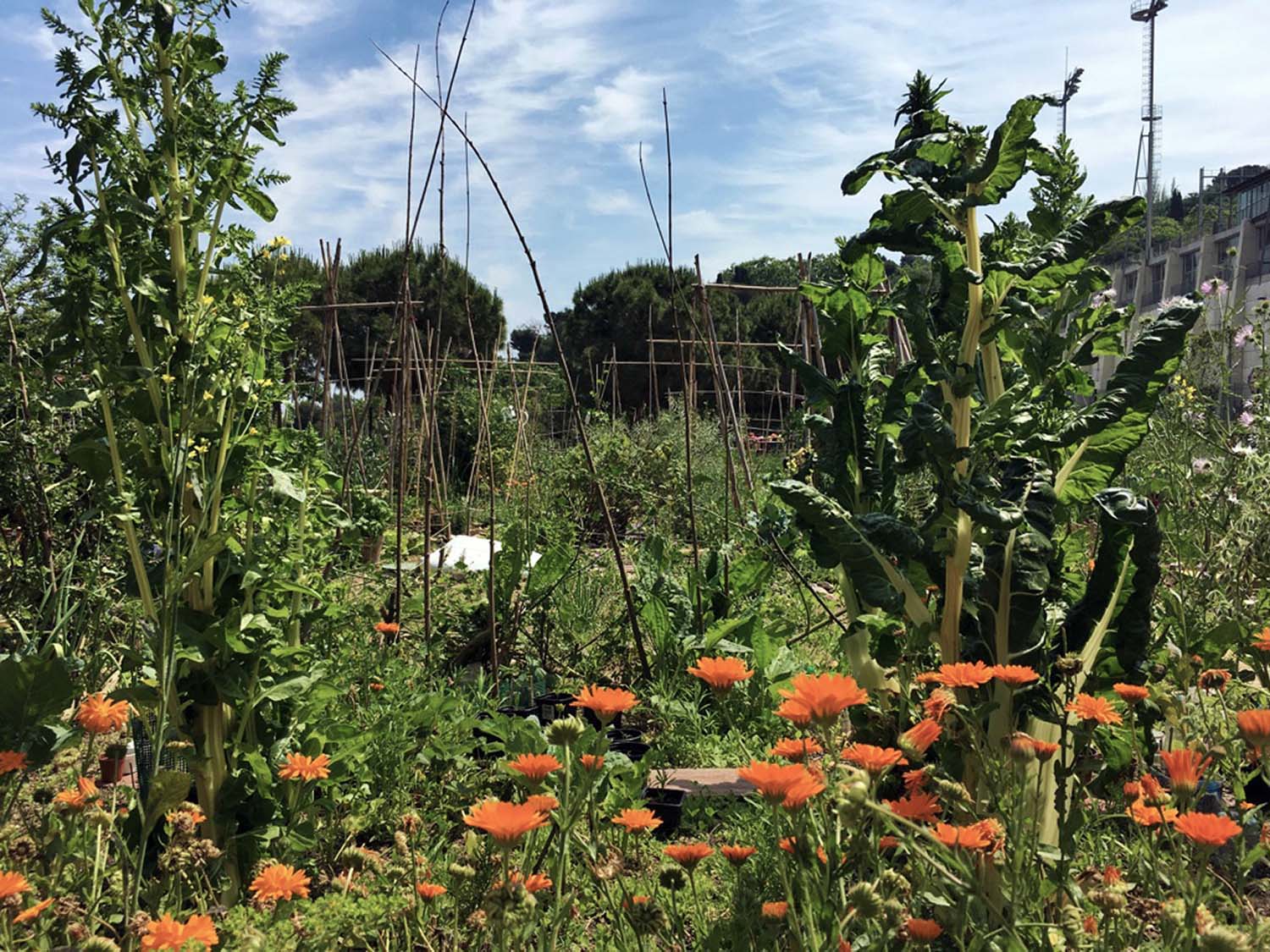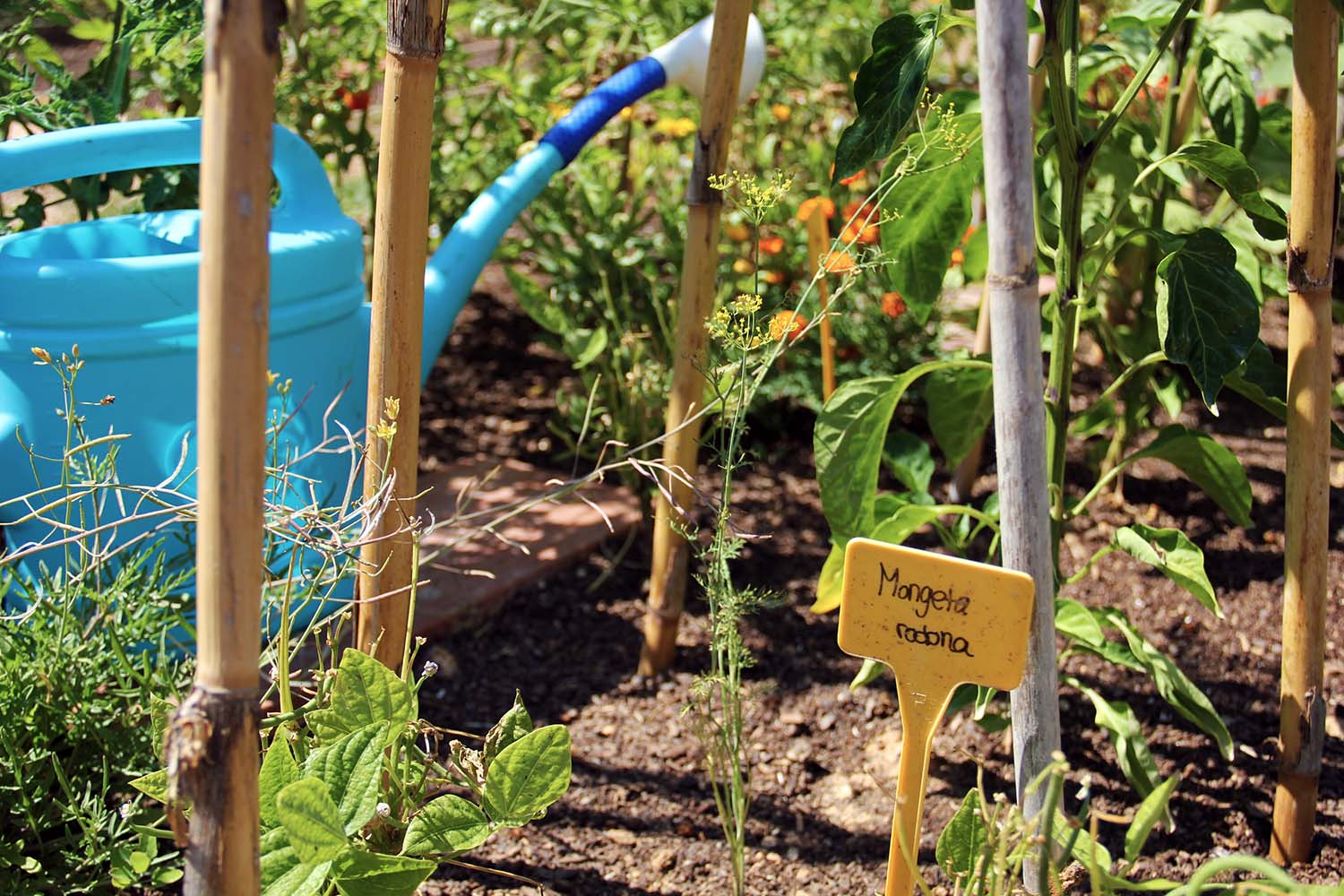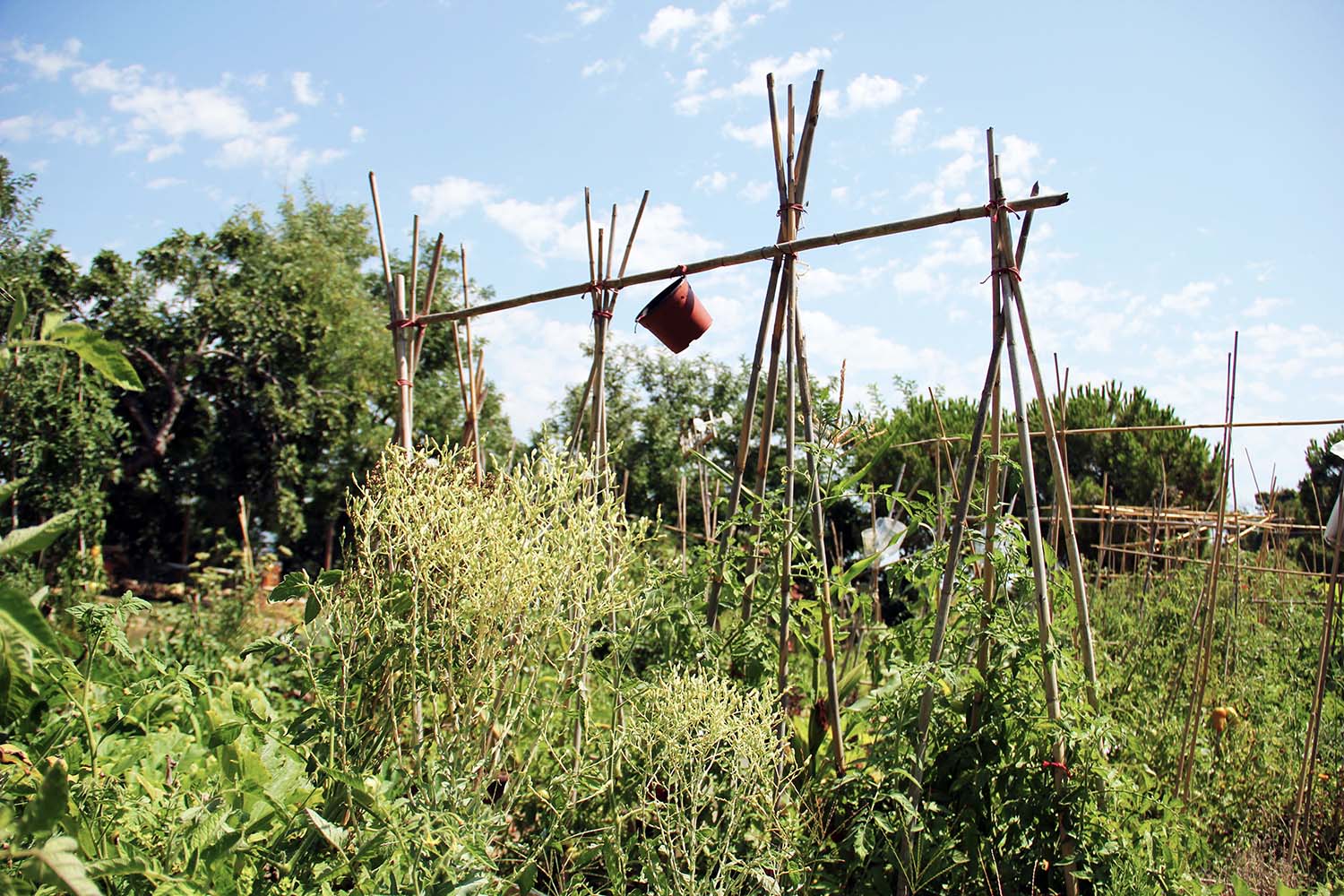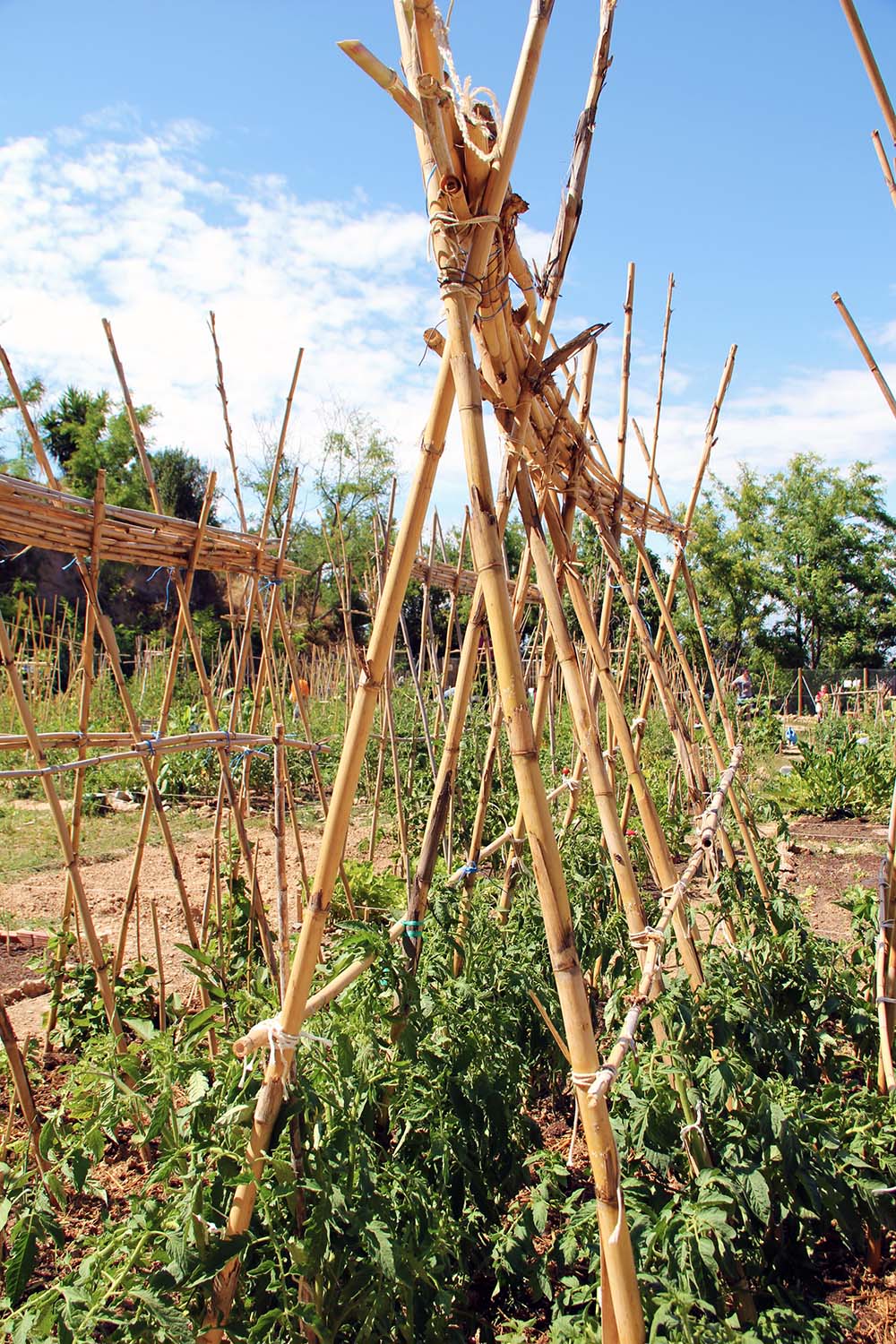REAPING WHAT WE SOW
COMMUNITY GARDEN HORT DE LA FONT TROBADA, BARCELONA
Bees are humming and butterflies are flying between the green sea of leaves, vegetables and flowers. It is hard to believe we are in one of Europe’s densest cities, Barcelona. Only 18 months ago this thriving community garden was abandoned wasteland. Now 90 families and 11 entities cultivate their plots with an estimated 200 people sharing and enjoying the gardens. ‘Do you want some tomatoes? We have seedlings from Galicia!’ someone shouts while filling the watering can at the Font Trobada, one of the local fountains which gives the garden its name.
A REMARKABLE HISTORY
Nestled between the suburb of Poble Sec and Montjuïc mountain, the area with its natural fountains was used as agricultural land since the 15th century, and later became a popular weekend excursion spot for working class people. Up to 20 fountains fed by mountain springs are known to have existed on Montjuïc, the most popular of them the Font del Gat with its famous restaurant designed by Josep Puig I Cadafalch. From the 1880s onwards, barracas - informal settlements – covered the slopes of the mountain, a phenomenon exacerbated through the influx of migrants looking for work at the World Exhibition and later waves of Spanish Civil War refugees. With major development setting in for the Olympic games, the barracas as well as the remaining gardens and fountains disappeared until the city council granted a petition for a self-managed community garden and recovered the Font Trobada before handing the land to the community association.
PARADES EN CRESTALL - SUSTAINABLE AGRICULTURE
The agricultural practices in the community garden are strictly ecologic and based on the Parades en Crestall method from Mallorca, an efficient method to cultivate small plots of land in hot climate areas in which constant moisture is achieved through a thin layer of humus topsoil and foliage density. Compaction of soil is to be prevented by providing walkways and stepping stones, and regular rotation of cultivated species is applied. The Parades en Crestall method specifies gravity fed drip irrigation, but the community association has opted for manual watering to keep the infrastructure as simple as possible.
COLLECTIVE EFFORT AND COMMUNITY BUILDING
Next to food production and ecology, the community garden has a strong social and pedagogical focus. Architecture cooperative Raons Publiques signed up for a plot to further connect with the local community and strengthen their social bonds beyond the office life. The Hort de la Font Trobada for them is an example of what they call ‘spaces of hope’ that make room for encounters between people, and people with nature, and hold a great potential to develop a collectivist culture.
La Rimaieta and El Petit Molinet, two self-organised family childcare centers active in the garden, explain how important it is for children and adults to get their hands dirty, share food and experiences, and work together to create knowledge and learn about the growing process.
This is how through collective effort, a green oasis has emerged to escape the city life and be amongst butterflies and bees.
A shorter version of this blog article was published on the Topos Magazine website on 26.07.2018.


